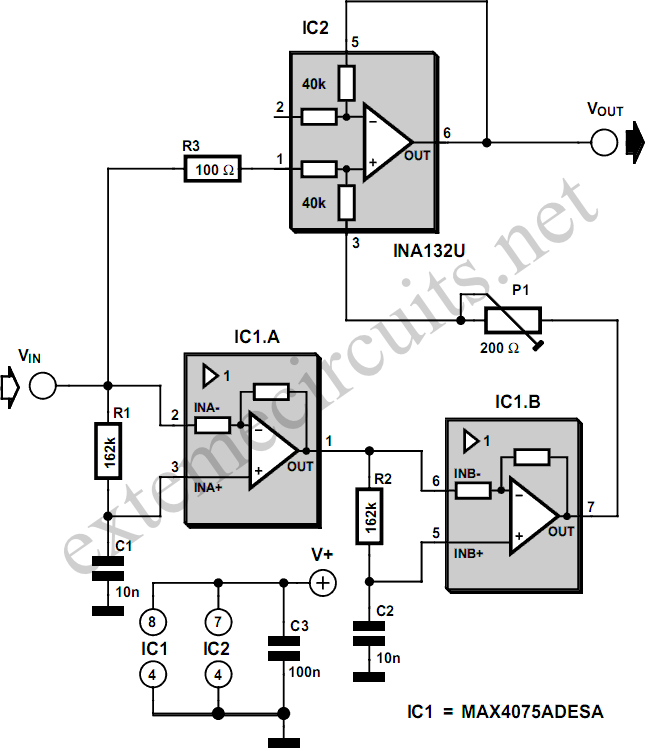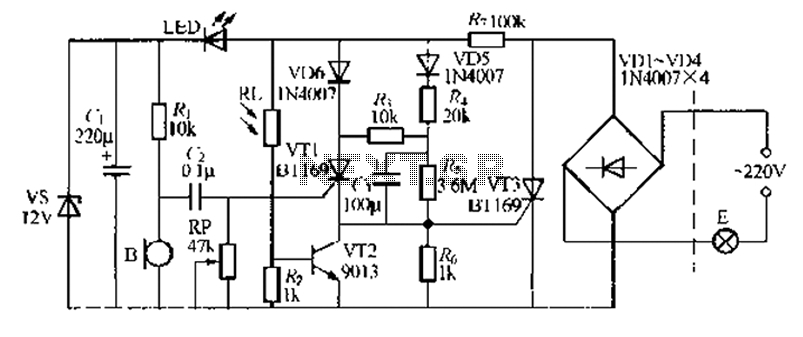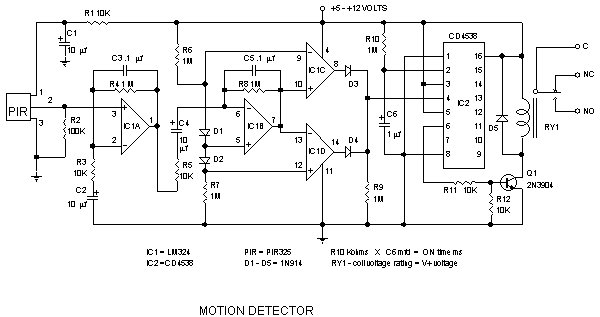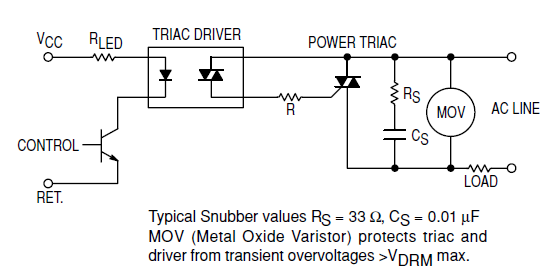
Salvaging Interesting Gadgets Components and Subsystems
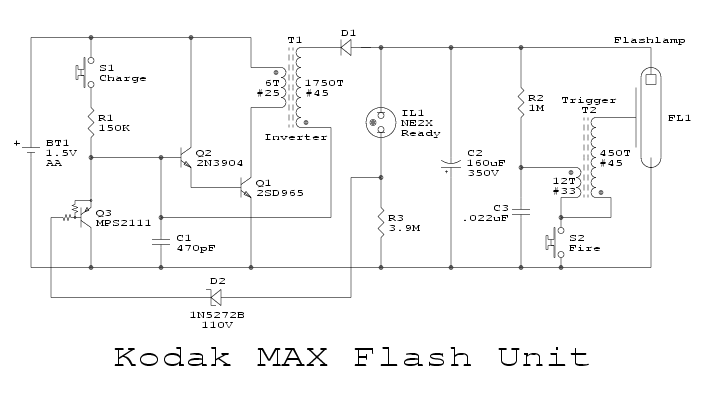
The high voltage power supply is likely capable of delivering between 12 to 30 kVDC at a current of 1 or 2 mA. This output is suitable for various high voltage applications, including experiments, plasma globes, negative ion and ozone generators, bug disintegrators, and starters for large helium-neon lasers. However, the devices, equipment, circuits, and other gadgets referenced in this document may pose significant dangers, as they often involve potentially lethal voltages. The risk of electrocution is serious, and precautions must be taken before engaging with any high voltage or AC line-connected equipment. Even seemingly benign items, such as disposable cameras, can harbor charged capacitors that pose a risk. For safety information, refer to the document titled "Safety Guidelines for High Voltage and/or Line Powered Equipment." Many devices that appear safe externally may have hidden dangers, including electrical hazards, sharp metal edges, wound springs, strong magnets, and the risk of CRT implosion. Therefore, caution is essential when handling any equipment.
To source components for experimentation, options include personal spaces such as basements and attics, as well as the properties of relatives and friends. Other potential sources include garage, yard, tag, and estate sales; thrift stores, which may have free items; junk, salvage, and surplus yards (including those operated by the Department of Defense); landfills that allow scavenging; trash rooms in high-rise apartments; curbside pickups; college campuses at the end of spring term; and high-tech flea markets. Regular flea markets may have inflated prices, but negotiation can yield good deals.
Two notable sources of magnets are mentioned. Microwave oven magnetron tubes contain two ring-shaped ferrite magnets, approximately 2-1/4 inches in diameter with a 7/8-inch hole, magnetized on the faces. While some older magnetrons may feature AlNiCo magnets or electromagnets, these are less common. Additionally, large hard disk drives, especially full-height 5-1/4 inch performance types, such as the Seagate WREN series, contain powerful rare earth magnets. Although smaller drives have even stronger magnets, they are less substantial in size. A typical large drive magnet measures about 1 inch by 1-1/4 inches by 1/2 inch. Given the declining demand for these older drives, they can often be found at swap meets or yard sales at minimal cost. The magnetic strength of these components can reach several thousand Gauss, compared to 10 to 15 K Gauss (1 to 1.5 Tesla) found in medical MRI scanners, which maintain a uniform magnetic field.
The high voltage power supply circuit typically consists of several key components, including a transformer, rectifier, and filter capacitors. The transformer steps up the input voltage to the desired high voltage level. A rectifier, often a diode bridge, converts the AC voltage output from the transformer into DC voltage. The filter capacitors smooth out the rectified voltage, reducing ripple and providing a steady DC output. Safety measures, such as fuses and circuit breakers, are crucial to protect against overloads and short circuits. Insulation materials must be selected carefully to withstand the high voltages present in the circuit. Additionally, the use of enclosures designed to prevent accidental contact with live circuits is essential in any high voltage application. Proper grounding techniques should also be implemented to ensure safety and reliability in operation.The high voltage power supply was probably good for 12 to 30 kVDC at 1 or 2 mA. This is useful for many high voltage experiments, plasma globes, negative ion and ozone generators, bug disintegrators, starters for really LARGE HeNe lasers, etc. The devices, equipment, circuits, and other gadgets described in this document may be dangerous. Much of it deals with potentially lethal voltages. Getting electrocuted could ruin your whole day. Before thinking about experimenting with anything using or producing high voltages or connected to the AC line - even opening up a disposable camera that may have been laying around gathering dust (the capacitor can still be charged - arggh!), see the document: Safety Guidelines for High Voltage and/or Line Powered Equipment. A large percentage of equipment that is perfectly safe from the outside has dangers lurking inside. In addition to electrical dangers, there might be sharp sheet metal, wound up springs, powerful magnets, and other potential risks to your outer surface integrity like CRT implosion - just to name a few.
Something that looks innocent can really ruin your entire day! So, where do you find the equipment from which to remove parts other than your basement, your attic, or those of your relatives or friends Consider garage, yard, tag, estate, and other sales; thrift stores (which may even have a `free` table); junk, salvage, and surplus yards (including those run by the Department of Defense!), the town dump and other landfills if they let you take things away, trash rooms of high rise apartment complexes, the curb on pickup day, college campuses around the end of the Spring term, and any other place where perfectly good equipment gets tossed in this throw-away society! Of course, don`t overlook high tech flea markets as well as ham and computer fests. Regular flea markets are usually overpriced (where do you think they get the stuff ) but sometimes you will be able to negotiate a great price because they have no idea of what they are selling!
Two excellent sources of magnets are described below. These are at least as strong as the more well known speaker types, possibly much stronger, and generally easier to remove: Microwave oven magnetron tubes. Go to your local appliance repair shop and ask - they just toss bad ones. Each one has two ring shaped ferrite magnets about 2-1/4" in diameter with a 7/8" hole, magnetized N-S on the faces.
Note: A few older magnetrons used AlNiCo magnet assemblies or even possibly electromagnets which are not nearly as interesting. However, you probably won`t see any of these. Large hard disk drives - especially full height 5-1/4" high performance types - e. g. , Seagate WREN series or Micropolous boat anchors (the rare earth magnets in these are wicked). The magnets in small drives are even stronger but are, well, much smaller. :-) A typical size for a large drive is about 1" x 1-1/4" by 1/2". Since almost no one wants such large slow drives anymore, they are often found at swap meets or yard sales for next to nothing.
These magnets are a few thousand Gauss compared to 10 to 15 K Gauss (1 to 1. 5 Tesla) for a medical MRI scanner (of course, the field of the MRI scanner`s superconducting magnet is uniform over 🔗 External reference
To source components for experimentation, options include personal spaces such as basements and attics, as well as the properties of relatives and friends. Other potential sources include garage, yard, tag, and estate sales; thrift stores, which may have free items; junk, salvage, and surplus yards (including those operated by the Department of Defense); landfills that allow scavenging; trash rooms in high-rise apartments; curbside pickups; college campuses at the end of spring term; and high-tech flea markets. Regular flea markets may have inflated prices, but negotiation can yield good deals.
Two notable sources of magnets are mentioned. Microwave oven magnetron tubes contain two ring-shaped ferrite magnets, approximately 2-1/4 inches in diameter with a 7/8-inch hole, magnetized on the faces. While some older magnetrons may feature AlNiCo magnets or electromagnets, these are less common. Additionally, large hard disk drives, especially full-height 5-1/4 inch performance types, such as the Seagate WREN series, contain powerful rare earth magnets. Although smaller drives have even stronger magnets, they are less substantial in size. A typical large drive magnet measures about 1 inch by 1-1/4 inches by 1/2 inch. Given the declining demand for these older drives, they can often be found at swap meets or yard sales at minimal cost. The magnetic strength of these components can reach several thousand Gauss, compared to 10 to 15 K Gauss (1 to 1.5 Tesla) found in medical MRI scanners, which maintain a uniform magnetic field.
The high voltage power supply circuit typically consists of several key components, including a transformer, rectifier, and filter capacitors. The transformer steps up the input voltage to the desired high voltage level. A rectifier, often a diode bridge, converts the AC voltage output from the transformer into DC voltage. The filter capacitors smooth out the rectified voltage, reducing ripple and providing a steady DC output. Safety measures, such as fuses and circuit breakers, are crucial to protect against overloads and short circuits. Insulation materials must be selected carefully to withstand the high voltages present in the circuit. Additionally, the use of enclosures designed to prevent accidental contact with live circuits is essential in any high voltage application. Proper grounding techniques should also be implemented to ensure safety and reliability in operation.The high voltage power supply was probably good for 12 to 30 kVDC at 1 or 2 mA. This is useful for many high voltage experiments, plasma globes, negative ion and ozone generators, bug disintegrators, starters for really LARGE HeNe lasers, etc. The devices, equipment, circuits, and other gadgets described in this document may be dangerous. Much of it deals with potentially lethal voltages. Getting electrocuted could ruin your whole day. Before thinking about experimenting with anything using or producing high voltages or connected to the AC line - even opening up a disposable camera that may have been laying around gathering dust (the capacitor can still be charged - arggh!), see the document: Safety Guidelines for High Voltage and/or Line Powered Equipment. A large percentage of equipment that is perfectly safe from the outside has dangers lurking inside. In addition to electrical dangers, there might be sharp sheet metal, wound up springs, powerful magnets, and other potential risks to your outer surface integrity like CRT implosion - just to name a few.
Something that looks innocent can really ruin your entire day! So, where do you find the equipment from which to remove parts other than your basement, your attic, or those of your relatives or friends Consider garage, yard, tag, estate, and other sales; thrift stores (which may even have a `free` table); junk, salvage, and surplus yards (including those run by the Department of Defense!), the town dump and other landfills if they let you take things away, trash rooms of high rise apartment complexes, the curb on pickup day, college campuses around the end of the Spring term, and any other place where perfectly good equipment gets tossed in this throw-away society! Of course, don`t overlook high tech flea markets as well as ham and computer fests. Regular flea markets are usually overpriced (where do you think they get the stuff ) but sometimes you will be able to negotiate a great price because they have no idea of what they are selling!
Two excellent sources of magnets are described below. These are at least as strong as the more well known speaker types, possibly much stronger, and generally easier to remove: Microwave oven magnetron tubes. Go to your local appliance repair shop and ask - they just toss bad ones. Each one has two ring shaped ferrite magnets about 2-1/4" in diameter with a 7/8" hole, magnetized N-S on the faces.
Note: A few older magnetrons used AlNiCo magnet assemblies or even possibly electromagnets which are not nearly as interesting. However, you probably won`t see any of these. Large hard disk drives - especially full height 5-1/4" high performance types - e. g. , Seagate WREN series or Micropolous boat anchors (the rare earth magnets in these are wicked). The magnets in small drives are even stronger but are, well, much smaller. :-) A typical size for a large drive is about 1" x 1-1/4" by 1/2". Since almost no one wants such large slow drives anymore, they are often found at swap meets or yard sales for next to nothing.
These magnets are a few thousand Gauss compared to 10 to 15 K Gauss (1 to 1. 5 Tesla) for a medical MRI scanner (of course, the field of the MRI scanner`s superconducting magnet is uniform over 🔗 External reference
